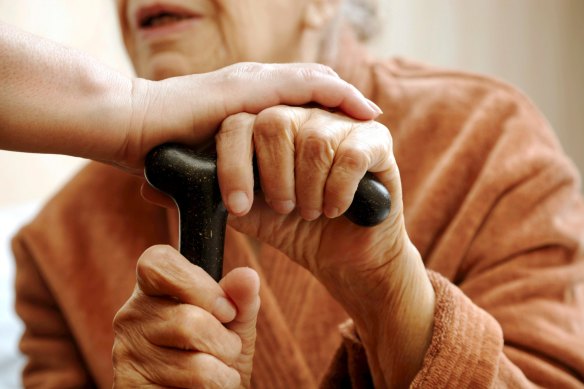
What happens to your money when an aged care provider fails?
Save articles for later
Add articles to your saved list and come back to them any time.
In the past three years, $125 million has been refunded to aged care residents as a result of provider collapses, and a total aged care bond pool of $33.5 billion is potentially on the line, with taxpayers left to foot the bill of defaults.
In 2006, the then federal government introduced a guarantee scheme for aged care accommodation bonds (now known as Refundable Accommodation Deposits). Under this scheme, if you leave your aged care home, the balance of any lump sum payment must be refunded.
Between 2006 and June 2021, the aged care bond pool grew to $33.5 billion.Credit: Fairfax
The scheme was introduced as a result of the increasing size of individual bonds and the fact that the bond often represented a significant proportion of a resident’s wealth. In addition to the guarantee, the government enhanced the prudential arrangements and strengthened the statutory obligations.
At the time, aged care providers held nearly 50,000 bonds with a total value of about $5.2 billion. The average provider held about $5.5 million and the 11 largest accommodation holders accounted for approximately 20 per cent, or about $1 billion, of all accommodation bond monies. The average accommodation bond paid by new residents in 2005-06 was $141,690.
From 2006 to June 2021, the bond pool grew to $33.5 billion with about 97,000 accommodation bonds with an average value of $344,000.
In that time, the largest bond holding for a single provider was $1.2 billion. The guarantee scheme has been triggered 16 times, refunding 527 residents more than $171 million (plus interest and administration costs).
The majority of defaults, approximately $125 million, have been in the past three years with the government refunding $64.8 million to 178 residents in 2021-22. The largest default was Berrington Aged Care, a relatively small operator with two homes, which led the government to pay $57 million to 62 residents.
The Aged Care Quality and Safety Commission monitors compliance with the prudential standards. The standards include the requirement for operators who invest beyond approved deposits to have an investment management strategy; ensuring all operators have a liquidity management strategy to ensure they can meet their refund obligations as they fall; maintaining a record of the deposits they hold; and meeting the disclosure requirements.
When the then Howard government introduced the guarantee scheme in 2006, it also introduced legislation giving the minister the right to impose a levy across residential aged care providers to recoup defaulted bond monies and administrative costs. In the 2017 legislated review of aged care, it was recommended that the government should levy providers for any defaults over $5 million. To date, a levy has not been enacted.
It is a good thing that the risk of this silent financial failing is not borne by residents or their estates. But it’s not correct to say the government is paying for it, as it’s taxpayers who are on the hook. While a levy sounds fair, given the financial troubles the industry faces, if a large provider defaulted owing hundreds of millions and the industry was levied, the impact could cause a domino effect and multiple providers could collapse under the financial pressure. With $33.5 billion on the line, a solution needs to be found.
- Advice given in this article is general in nature and is not intended to influence readers’ decisions about investing or financial products. They should always seek their own professional advice that takes into account their own personal circumstances before making any financial decisions.
Rachel Lane is the principal of Aged Care Gurus and co-author of Aged Care, Who Cares? and Downsizing Made Simple.
Most Viewed in Money
From our partners
Source: Read Full Article
